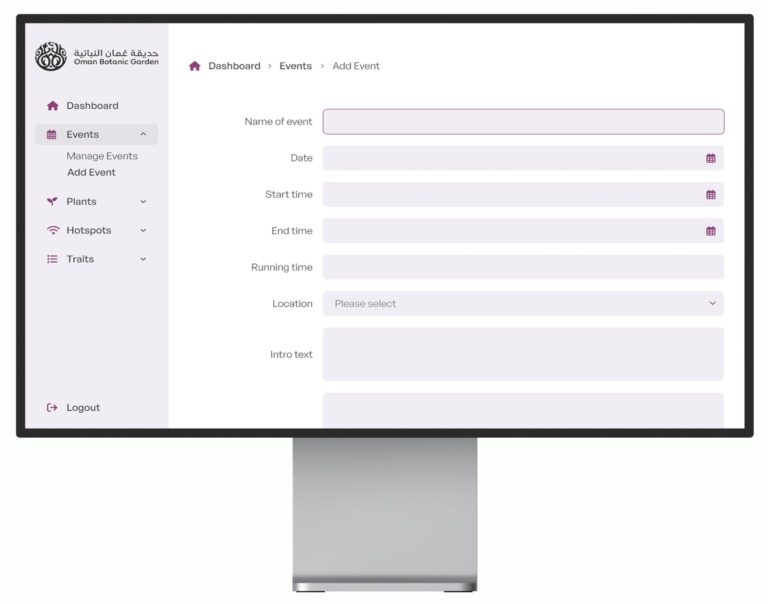Everyone wants a website these days, infact you could say that everyone ‘needs’ a website these days. It’s become just about as important as business cards and a yellow pages listing were 15 years ago. But there are quite a few things to consider before thinking that a website will solve all your business problems. It takes more than just flashy graphics to make a good website.
1. What are you hoping to achieve from your website?
It’s a good idea to have a clear idea of what you are looking for from your website and what you hope it will do for your business. You need to make a clear business case for your site, think clearly about your aims and build a site that will really add value to your business. Having a website in itself won’t magically make your business grow, you need to think about your users and the messages you want to get across to them.
2. Who do you want your site to appeal to? Think about your audience.
It’s important to think about your audience… How will they view your site and what do you want to show them. If your site is primarily for an older generation for example, you need to think about adding larger, clearer fonts with good general accessibility. If you are aiming at attracking a younger audience, perhaps including flashy graphics and games would be more appropriate?
3. How do you plan to measure the effectiveness of your site?
It’s all very well having a website, but as with all marketing efforts, it’s important to be able to gauge how successful your site is at bringing in new customers, converting visitors into customers and how well your site is generally received by your visitors. You can do this by gathering and analysing web statistics. I’ve found Google Analytics as an excellent way to find out information about the people using your site, where they are from, how long they’ve been on your site and loads more.
It’s also a good idea to ask people how they found your site, where they came from, and what they think about your site.
4. How will people find your site?
The Internet is MASSIVE, the ‘build it and they will come’ philosophy is a very risky one and doesn’t really apply to web sites I’m afraid. Unless you are a big multi-national with a huge marketing budget, you will need to think very carefully about how you’ll actually get people to your site. Having a website alone is only half the battle, getting users is the real challenge you’ll face.
Some of the most common methods of gettings users include:
1. Search engines
2. Links from other sites
3. Links in relevant online directories such as the Open Directory Project
It’s important that you design your site with this in mind. Search Engine Optimisation is a hugh topic in itself and a very inexact science but there are techniques professional seo marketeers can use to give your site the best possible chance of appearing in user searches. Online forums such as the Sitepoint Forums can provide a great starting point for reading up and learning more about SEO.
5. How will you keep your website up-to-date and relevant?
Websites need to be evolving and constantly changing to keep the interest of your users. You should avoid just creating a boring static website, but add quality content as often as you can. It’s important that whatever solution your web designer provides you with, it’s possible for you to add content and update your site.
I’ve found the easiest way of keeping your site up-to-date and fresh is to write a blog. Blogging software is widely available and easy to use. The blog you are reading runs on WordPress, which I would highly recommend.
If you want to have a more versatile solution, but don’t fancy the propect of learning HTML (the language website are written in) then you could investigate the possibility of using a more comprehensive Content Management System for your website. Systems such as Drupal and Joomla provide a HUGE amount of functionality, but with this also comes a lot of complexity, often far more than a simple website requires. So I would be careful before going down this route. It’s worth talking over your options with a professional before proceeding down one path or another.
6. How future proof will your site be?
I hate the phrase ‘future proof’ because such a thing just doesn’t exist. PC World use it to sell new computers, but what happens when in 5 years time all those customers then have to swap in their ‘future proof’ computers for the next model up…!
Anyway, although I hate to use the expression, future proofing is an important consideration in web design too. It’s a large topic, but by creating a website that follows the latest conventions and W3C recommendations you are giving your site the best chance of being ‘compatible’ with future technology and applications of that technology. Read more about the W3C and their attempts to lead the web to it’s full potential.
Conclusions
So are you can see, there a lot more to creating a website than just having a pretty design. The decisions you make at the start of your project are vital to ensuring you have a site that will be successful and useful to you and your business going forward. Please contact us to discuss your requirements and the best solution for your company.


